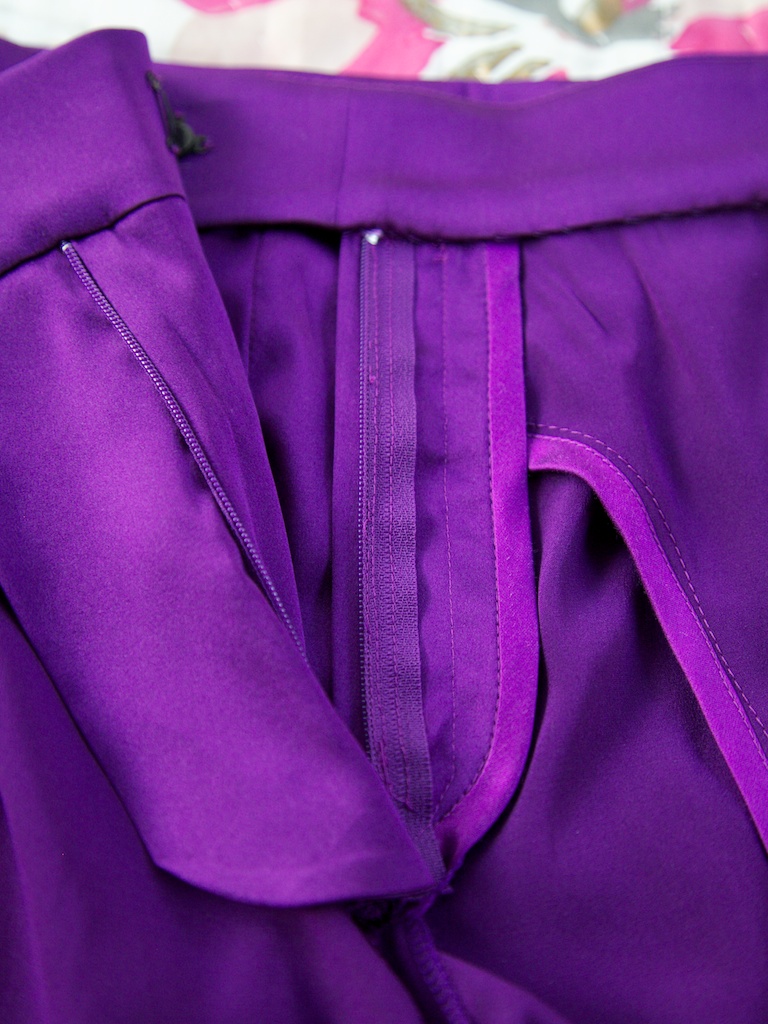
My favorite kind of sewing book is a patternmaking book, and I collect many, even in languages I don’t read. Every patternmaking book has a slightly different way of doing things so I hunt through them to find tidbits I might not see in another book.
One thing I have always wished for in any textbook is more insight into production patternmaking–and what I mean by that is the process of creating patterns according to how they would be sewn in a factory. The seam allowances and markings (if shown at all) are generic in most patternmaking books, and I suspect a large part of that is because these are specifics that are learned on the job, not in a university where most textbooks have their market.
However, I love making home sewing patterns a little more “production pattern” ready, if only because it often makes my sewing so much easier. And this is the kind of subject that deserves its own book.
Enter Design Room Techniques, a hunk of a workbook that fills the nichest niche for those wanting to learn more about production sewing and patterns.

Author: Laurel Hoffmann
Publisher: self-published
Paperback or hardbound: paperback with comb binding
Pages: 455
Additional content: CD insert includes pdfs of the patterns and sample pages (to document samples)
(Note: since I purchased this book it has been updated to include new information and has a new title, Sewing Techniques from the Fashion Industry. The new version can be purchased here. I am reviewing the previous version.)
about the author
Laurel Hoffman is an instructor with experience in home sewing, custom bridalwear design and production patternmaking–all three of which have very different practices. She offers books and private training through her website and business Contemporary Fashion Education.
While there have been other educators that have made a business adapting industry techniques to home sewing, such as Margaret Islander and her niece Janet Pray, Hoffmann’s focus is a bit more technical–a bit more for the patternmakers, which I like!

who is it for
I’m not entirely certain who the main audience for this book is–custom patternmakers, indie designers, production patternmakers, technical patternmaking students? All of the above? But I’m positive anyone in those fields could pick up a thing or two from this book.
If you want to re-engineer a pattern for easier sewing of lapped openings, fly zippers, lined sleeveless dress–all of which tend to have tricky or (ahem) hacky methods in home sewing patterns–this book is your guide. But it’s more than just a collection of “how-tos”; it’s really an instruction manual in how to create procedures.
The point of industrial sewing processes is to make things as clean and steamlined as possible, and that almost always leads to great looking results. For example, here’s the first page of the 6-page explanation for welts with an inset pocket, and as you can see this is a bit different approach than home sewing:

I’ve used a variation of her technique for drafting fly zippers (top photo), and I’m hooked on doing it this way. I’m able to cut, sew and topstitch a fly fast and clean–with no pins, basting or trimming. And it looks mighty fine:

My dislikes?
On the visual side, this book ain’t sexy and while I don’t expect it to be, it could have used a graphic designer. (Yes, even technical books benefit from good technical design.)
And my second complaint is about its binding. I have a thing about crap bindings. So public service announcement time: Plastic comb bindings are better for seminars, not for books that are meant to be opened and used over and over. Nearly any book I have with a comb binding falls apart quickly. (Self publishers: please pretty please, spend the extra money on spiral bindings.)
Regardless of packaging, the information here is gold and anyone with a particular fascination with industrial sewing will get some kicks from trying out a few of these techniques.
The post Book Review: Sewing Techniques from an Industry Perspective appeared first on Cloth Habit.